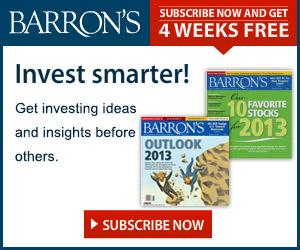Big Pharma stocks, and healthcare stocks in general, are famous for gushing prodigious cash flow for shareholders. Some management teams tend to pay out much of that cash flow in the form of dividends. Other teams tend to use cash flow to repurchase company shares. Let’s look at the Pros and Cons of each approach, and review some guidelines that will help you select the right investments for your portfolio.
“The only thing that still makes me happy is to see my dividends come in,” wrote an elderly John Rockefeller. We can hope that you have more joy in life than checking your Etrade account, but anyone who has experienced a hefty jolt of quarterly dividends certainly understands Mr. Rockefeller’s enthusiasm. Afterall, it can feel like a small miracle to receive a regular paycheck merely for owning something, rather than doing something…
So then, it’s quite possible that Mr. Rockefeller would be dismayed that many companies have actively worked to minimize dividends in recent years. Instead, many management teams these days opt to use free cash to buy back their own shares. The idea behind this trend is quite simple to visualize: if there are less shares available on the open market, then demand for shares will exceed supply, and the share price may go up. Additionally, the less shares outstanding, the higher earning per share, a prized Wall Street metric.
The goal in this case is to maximize share price appreciation at all cost; shareholders may not get much cash in their hand, but their net worth will steadily increase along with their investment’s share price.

Both approaches have their opponents, and detractors. Obviously, Rockefeller, one of the richest men of all time, was a fan of dividends. Warren Buffett, on the other hand, has never paid a dividend and actively seeks to invest in companies that buy back their own shares.
Which is the better approach? Like so many things in life, the answer boils down to just two words, “It depends.”
Just as there are a lot of ways to skin a cat, there are a lot of ways to get rich investing in stocks. Let’s go over the “Pros&Cons” and discuss which kinds of investments may be right for you.
DIVIDEND Pros:
-There is nothing quite like the feeling of cold, hard cash in your hand on a quarterly, or even monthly basis.
-A juicy dividend tends to minimize the risk of the investment; sometimes share prices crash for no real reason, while dividends are still maintained or even increased. Steady income tends to cushion you in the event of share price decline.
-Dividends are taxed at very low rates for many people (15%). The only people who face higher taxation rates are relatively high income earners (ask your accountant).
-If you collect your dividends in an IRA or other retirement account, you will benefit from the enormous power of compound interest, tax free.
-You remain in more control of your investment; you can do whatever you want with your dividends. You can reinvest them, you can invest them in a different stock, or you can spend them.
DIVIDEND Cons:
-If you are a high income earner, taxation can go as high as 23.8%
-If you are not using a tax sheltered vehicle, your overall returns could be somewhat impaired by taxes over time.
-If a company is very dependent on a dividend for share price support, and that dividend is cut, your share price may be swiftly punished.
HIGH DIVIDEND PAYING STOCKS MAY BE BEST FOR:
-Retirees, or near retirees who need steady income with modest taxation.
-Young savers with access to tax sheltered accounts (IRA, 401K, etc).
-New investors who need the emotional reassurance of regular deposits showing up in their checking account.
-Risk Averse investors who prioritize safety over rapid growth.
WHERE TO LOOK FOR SOLID DIVIDEND PAYING STOCKS
-European Pharma Companies, American Mega Cap Pharma Companies, REITS (Real Estate Investment Trusts).
Examples: $GSK, $BAYRY, $PFE, $ABBV, $VTR, $HCP
BUYBACK PROS:
–Very tax efficient, especially for high income earners.
-May lead to more rapid growth in share price.
-May support share price during economic downturns.
-May signal to the market that a company is a “growth” story rather than a “slow but steady” investment.
BUYBACK CONS:
–Hard to live off of stocks that don’t produce income.
-Management teams may tend to prioritize buybacks over potentially more productive uses of capital, such as R&D, or acquisition.
-Since buybacks are less well understood than dividends by the general public, this behavior can sometimes open the door to abusive or even fraudulent management practices. For example, some companies borrow money to buy back shares, which is an extremely questionable practice.
HIGH BUYBACK STOCKS MAY BE BEST FOR:
-High income earners seeking tax efficiency
-Aggressive investors seeking maximum share price appreciation.
-Savers who lack access to tax advantaged accounts (No IRA, no 401K).
-Experienced investors who don’t care about income
WHERE TO LOOK FOR BUYBACK STOCKS
–Insurance companies, Mid Cap Pharma stocks, Biotech stocks.
Examples: $UNH , $ANTM , $GILD, $AMGN, $BIIB
Choosing between share buybacks and dividends can feel a lot like choosing between chocolate ice cream, and vanilla ice cream. Some in this world have strong preferences one way or the other. Personally, I just love ice cream. Either way, if you are a patient investor who holds onto shares for the long term, Wall Street has a sweet treat for you…






More Stories
FOR BLOOD AND MONEY: A BIOTECH BOOK REVIEW
UNNATURAL SELECTION: NETFLIX DOES BIOTECH
HOW DO CLINICAL TRIALS WORK?